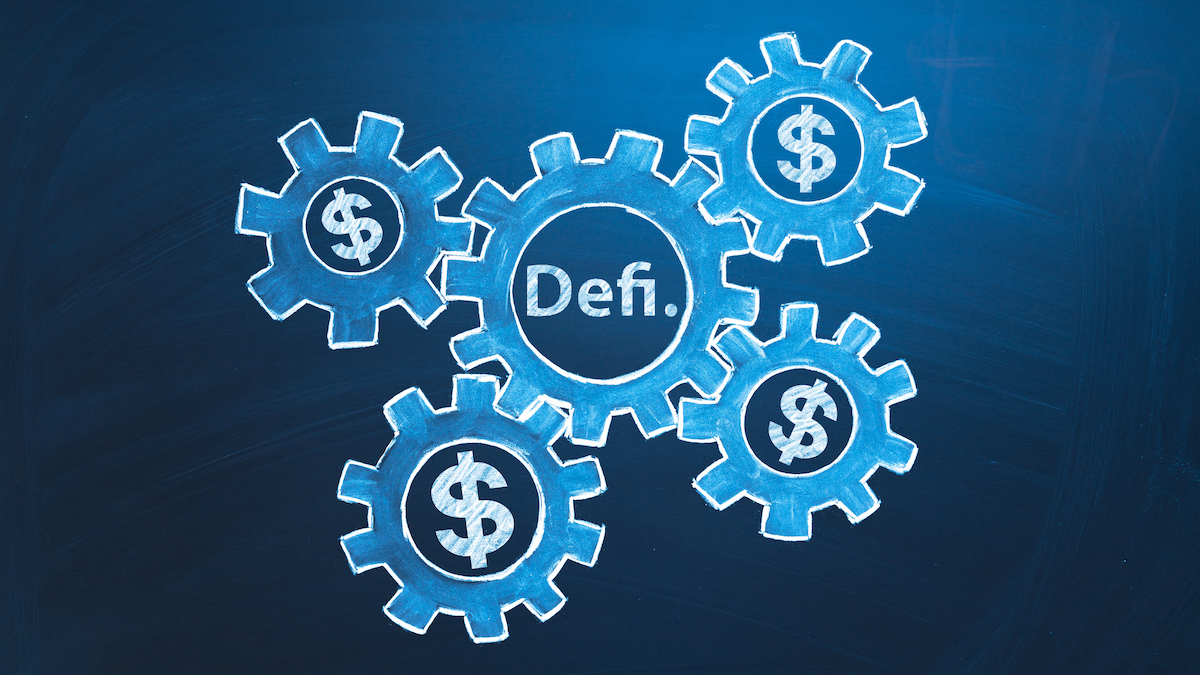Apollo’s Moonshots: Pendle Finance is the ‘most interesting’ project in DeFi right now

Getty Images
Matthew Harcourt, an analyst with Australia’s leading cryptocurrency investment firm, Apollo Capital, shares the fund’s weekly take on what’s happening in the fast-changing and volatile cryptocurrency space.
Apollo Capital is bullish on Pendle Finance, an interesting new defi (decentralised finance) platform that launched its mainnet just a week and a half ago.
“They had good fundraiser, and some big backers, and reasonably secure – they’ve had three different audits, and it provides really good farming opportunities at the moment,” Matthew Harcourt says.
For those new to defi, “farming” here doesn’t involve crops or cattle but “yield”, the process of earning a return on one’s crypto by locking it up in smart contracts in exchange for big rewards. (The locked-up crypto is lent to others or used in liquidity pools for trading purposes).
Defi is “composable,” meaning different protocols can interact with each other in a permissionless way. People in the space have talked about the various defi platforms as “Lego building blocks” or “money Legos,” which are coming together synergistically.
The leading defi lending platform is called Aave (Finnish for “ghost”), which has nearly $10 billion of value locked in its smart contract on the Ethereum blockchain. While yields have come down quite a lot since the May 19 crash, Aave still offers better returns on stablecoins than you’ll get at a bank.
Users can lock up a selection of stablecoins and major crypt assets on Aave and get interest-bearing “a-tokens” in return. For example, depositing the stablecoin USDC would give the user aUSDC tokens that accrue interest in real-time, directly to their Ethereum wallet.
What Pendle Finance does is let Aave users split those aUSDC coins and other “a-tokens” (as well as similar c-tokens from Compound, an Aave competitor) into “yield tokens” representing future yield, and “ownership tokens” representing ownership of the underlying asset. Stripped of their yield, ownership tokens trade at a discount.
Both tokens can be traded and exchanged, although the yield tokens will expire valuelessly when the current lock-up period ends on December 29, 2022. (Before then, ownership tokens must be combined with yield tokens to redeem the a-tokens. After December 29, 2022, only ownership tokens are needed for redemptions).
Harcourt says Pendle is “a lot better” than Alchemix, another future yield protocol. Another in the space is 88mph, which offers fixed-rate returns.
“We think, well, I think, (Pendle) is is the leading future yield protocol. We think it’s going to shake up this new space in defi.”
Customers can use the yield tokens to provide liquidity on Pendle Finance’s automated market maker, an algorithm for trading assets.
“Currently you can earn 350 per cent on that future yield for Compound Dai,” Harcourt said.
Then users can take their ownership tokens and earn 30 to 35 per cent yield on them using SushiSwap, Harcourt said.
“So a couple of really good yield strategies there,” Harcourt said.
On to the case study:
A Pendle user locked-in yield on $300k worth of aUSDC and cDAI, receiving a return of 54.5k USDC (18%). This USDC was immediately available in his wallet. pic.twitter.com/vtP4BbTKnQ
— Pendle (@pendle_fi) June 27, 2021
Don’t buy the token
Pendle Finance’s PENDLE token was trading Sunday at US60c, giving the project a market cap of just US$10.8 million (fully diluted, US$130 million). That makes it just the No. 770 crypto.
“So it’s pretty small, especially for a leader in that future yield space, and at the moment it is a bit of a one-trick pony, but it’s only a week old. Definitely an interesting one for us.
“Definitely a great, great farming opportunity, but you probably wouldn’t buy the token because it’s going to be pretty inflationary with these rewards.”
Interest-bearing tokens are going to be a massive space in the future, Harcourt said. “We’re bullish on that narrative.”
Tokenising future yields could be a whole new section of defi, Harcourt said.
Different defi protocols could integrate these yield tokens in different and innovative ways, again taking advantage of the “composable” nature of defi, Harcourt said.
“People are bullish on Alchemix because it’s loans that pay themselves back. I think that’s pretty boring.”
Harcourt said one strategy “if you want to be a bit more risky” is to buy yield tokens right off the Pendle app and then pair that with USDC to earn 300 per cent returns.
Harcourt said that wasn’t financial advice, but it is a strategy he’s employing in his own funds.
(For those interested in learning more, the second half of this article summarises some of the risks involved in using these protocols).
There’s about $26 million in total value locked (TVL) in the protocol, Harcourt said.
“Pendle Finance is the most interesting thing I’ve seen for awhile now, especially with the (bear) market. ”
The views, information, or opinions expressed in the interview in this article are solely those of the interviewee and do not represent the views of Stockhead.
Stockhead has not provided, endorsed or otherwise assumed responsibility for any financial product advice contained in this article.
Join our Cryptohead Facebook group to discuss all things cryptocurrency.
Related Topics
UNLOCK INSIGHTS
Discover the untold stories of emerging ASX stocks.
Daily news and expert analysis, it's free to subscribe.
By proceeding, you confirm you understand that we handle personal information in accordance with our Privacy Policy.








